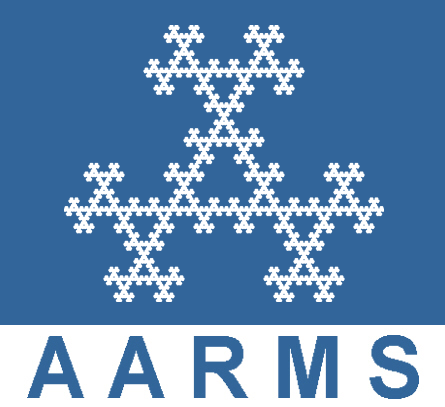2017 CMS Winter Meeting
Waterloo, December 8 - 11, 2017
Org: Rahim Moosa (University of Waterloo) and Sergei Starchenko (University of Notre Dame)
[PDF]
- GABRIEL CONANT, University of Notre Dame
Around regularity in tame expansions of groups [PDF]
-
We discuss recent developments in expansions of groups with stable and NIP theories, including applications of regularity lemmas.
- JIM FREITAG, University of Illinois at Chicago
Finiteness results for systems of algebraic differential equations [PDF]
-
We'll show how several disparate finiteness theorems for systems of differential equations (e.g. Sit's theorem on the well-ordering of Kolchin polynomials) follow from a general principle. We will also give several new applications.
- LEVON HAYKAZYAN, University of Waterloo
Spaces of Types in Positive Model Theory [PDF]
-
Positive model theory is a generalisation of first-order model theory, where definable sets are closed under finite conjunctions, finite disjunctions and projections (but not necessarily complementation). I will introduce a notion of a space of types in positive model theory based on Stone duality for distributive lattices. In general these spaces are non-Hausdorff compact sober spaces. I will show that they closely mirror the Stone spaces of types in first-order model theory. In particular, many classical results in first-order model theory generalise to the positive setting if we pick the right topological generalisations of notions from Hausdorff to sober spaces.
- REMI JAOUI, University of Waterloo
Geodesic flows and model theory of differential fields [PDF]
-
Geodesy is an old and well-established subject in mathematics. Given a smooth manifold $S$ embedded in the Euclidean space and two points on $S$, the main question is to determine the shortest path (geodesic) drawn on $S$ joining these two points.
It is well-known that all the geodesics of $S$ satisfy the same differential equation --- namely, the equation describing the movement of a particle constrained to move without friction along the manifold $S$. Of course, the behavior of this differential equation and of its solutions heavily depends on the geometric properties of $S$.
In my talk, I will state a (still incomplete) description of the model-theoretic properties of this algebraic differential equation when $S$ is a smooth, connected and compact real-algebraic surface with negative curvature.
- ALEX KRUCKMAN, Indiana University Bloomington
Generic theories, independence, and NSOP$_1$ [PDF]
-
"Generic theories" are a fruitful source of examples in model theory: start with a tame base theory $T$, expand it by adding extra structure, and take the model companion $T^*$. Generic theories can often be shown to be simple by characterizing a well-behaved notion of independence in $T^*$ (namely forking independence) in terms of independence in $T$. Recently, there has been increased interest in the class of NSOP$_1$ theories, spurred by the work of Chernikov, Kaplan, and Ramsey, who showed that NSOP$_1$ theories can also be characterized by the existence of a well-behaved notion of independence (namely Kim independence). Many examples of generic theories which fail to be simple have been shown to be NSOP$_1$ by this method.
In this talk, I will present a number of new examples of this phenomenon: In joint work with Nicholas Ramsey, we study the theory of the generic $L$-structure in an arbitrary language $L$. More generally, starting with a base $L$-theory $T$ which is NSOP$_1$, model complete, and eliminates the quantifier "exists infinitely many", we consider the generic expansion of $T$ to an arbitrary language containing $L$ and the generic Skolemization of $T$. In joint work with Gabriel Conant, we study the generic projective plane, considered as an incidence structure. More generally, we consider the generic bipartite graph omitting a fixed complete bipartite graph $K_{m,n}$. We show that all of these examples are NSOP$_1$, and we characterize various notions of independence (Kim, forking, dividing, thorn forking, and algebraic independence) in these theories.
- OMAR LEON SANCHEZ, University of Manchester
Nonisolated types in DCF and CCM [PDF]
-
Isolated types play a crucial role in totally transcendental theories. So it is important to obtain complete descriptions of them. In this talk I will show how in DCF one can reduce the question to (non)isolated minimal types and state what we know in the nontrivial case. Our results in fact apply to any Zariski-type structure having the CBP, for example CCM. This is joint work with R. Moosa.
- CAROLINE TERRY, University of Maryland, College Park
A stable arithmetic regularity lemma in finite-dimensional vector spaces over fields of prime order [PDF]
-
In this talk we present a stable version of the arithmetic regularity lemma for vector spaces over fields of prime order. The arithmetic regularity lemma for $\mathbb{F}_p^n$ (first proved by Green in 2005) states that given $A\subseteq \mathbb{F}_p^n$, there exists $H\leq \mathbb{F}_p^n$ of bounded index such that $A$ is Fourier-uniform with respect to almost all cosets of $H$. In general, the growth of the index of $H$ is required to be of tower type depending on the degree of uniformity, and must also allow for a small number of non-uniform elements. Our main result is that, under a natural stability theoretic assumption, the bad bounds and non-uniform elements are not necessary. Specifically, we present an arithmetic regularity lemma for $k$-stable sets $A\subseteq \mathbb{F}_p^n$, where the bound on the index of the subspace is only polynomial in the degree of uniformity, and where there are no non-uniform elements. This result is a natural extension to the arithmetic setting of the work on stable graph regularity lemmas initiated by Malliaris and Shelah. This is joint work with Julia Wolf.
- MARGARET THOMAS, McMaster University/University of Konstanz
Effective Pila--Wilkie bounds for unrestricted Pfaffian surfaces [PDF]
-
The counting theorem of Pila and Wilkie has become celebrated as one of the most important developments in o-minimality in recent years, with far-reaching consequences in diophantine geometry. It provides a subpolynomial bound on the number of rational points of bounded height lying on the `transcendental parts' of sets definable in o-minimal expansions of the real field.
The proof of this theorem does not, however, provide an effective bound, and the pursuit of examples for which one can obtain this remains very active, with a view to number-theoretic applications. I will discuss some recent progress made (in joint work with Gareth O. Jones) on obtaining this in the particular setting of surfaces implicitly defined from Pfaffian functions. These sets have a natural notion of complexity, and we show that an effective bound can be obtained here which is uniform in that complexity. This uniformity is critical in allowing us to handle both restricted and unrestricted cases.
- ERIC WALSBERG, UIUC
Model companions of unions of theories [PDF]
-
Suppose $T_1,T_2$ are model complete first order theories in languages $L_1,L_2$ such that $T_1 \cap T_2$ is a consistent $L_1 \cap L_2$-theory. Robinson joint consistency implies $T_1 \cup T_2$ is consistent. We describe general conditions which ensure that $T_1 \cup T_2$ has a model companion and describe some natural examples where these conditions hold. Joint with Minh Tran.





